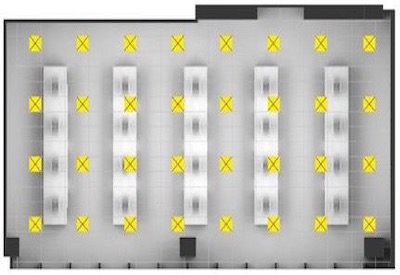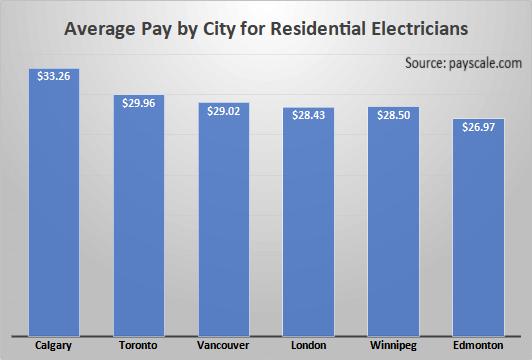Will Controls Be Key to Circadian Lighting?

June 28, 2021
By Craig DiLouie
While “circadian lighting” varies in definition, it generally refers to design that uses intensity and spectrum of light for a non-visual effect — namely, to support regulation of circadian rhythms. A new study suggests that by enabling intensity and spectral adjustment and optimizing exposure based on time of day, designers and owners can minimize the energy trade-off imposed by associated typically much higher light levels. This would entail use of an advanced lighting control system capable of scheduled dimming and perhaps spectral emission adjustment.
Circadian lighting, or biologically effective lighting, is the culmination of decades of research, though as a design practice it is new to the lighting industry. As such, it’s evolving as ongoing research is incorporated. In the meantime, the WELL Building Standard V.2, UL Design Guideline 24480, and the Collaborative for High-Performance Schools (CHPS) Core Design Criteria 3.0 all provide lighting design recommendation and goalposts for circadian lighting implementation.
In some cases, the guidelines significantly vary, either in the primary metric used or in the target values. The primary metrics used in these guidelines are equivalent melanopic flux (EML) and circadian stimulus (CS). As an example of variation in target values, at the time the study was published, the WELL Education Pilot recommended EML ≥ 125 m-lux as an appropriate stimulus four hours per day, while CHPS recommended that EML ≥ 250 m-lux was needed. As a result, it is difficult to say what “effective implementation” truly means, as again the guidelines vary and continue to evolve as new research becomes available and is incorporated.
Meanwhile, a key question in making these guidelines actionable is the potential impact on energy use, as they may pose significant increases in indoor light levels.
This was the focus of a new study by the Pacific Northwest National Laboratory (PNNL), which evaluated energy use in simulated designs attempting to comply with the guidelines. Funded by the U.S. Department of Energy, the study found significant increases in indoor light levels and associated energy consumption, suggesting an energy tradeoff in realizing circadian lighting goals.
PNNL modeled an open office and classroom, varying light output, spectral emission, light distribution, task orientation, duration of stimulus exposure, and more in a series of simulations totaling 45 unique conditions. The researchers determined that current IES task light level recommendations did not satisfy EML and CS targets for either office or classroom environments.

“In some cases, meeting the circadian metric recommendations required an average illuminance that was more than double the IES recommendations, which may negatively affect lighting quality and increase energy use,” noted the study’s authors in their report. Satisfying circadian metric recommendations in some cases also required correlated colour temperatures (CCTs) much higher than typically used in open offices and classrooms.
Overall, PNNL estimated a 10-100%increase in annual energy use depending on the number of hours per day the circadian guideline is met. The more conservative energy estimates, closer to 10-15%, involved limiting duration of circadian stimulus to four hours per day, which would most effectively be implemented using an advanced lighting control system providing what is sometimes referred to as “light showers.”
Tunable-white offers utility for circadian stimulus but presents its own trade-offs of increased complexity and modestly higher energy consumption. Another option to reduce the required quantity of electric light is daylight, though that has its own challenges, notably variability in daylight availability.
So will lighting controls be key to unlocking the potential of circadian lighting? As again the field is evolving, this remains to be seen. The study authors noted that the energy trade-off cannot be fully expressed until circadian lighting metrics and effective stimulus delivery are better understood.
As circadian lighting may require higher indoor light levels, however, advanced controls are certainly well positioned for their ability to automatically adjust intensity and spectrum based on time of day.
As shown by this study, limiting the duration of circadian stimulus by adjusting intensity and spectrum can support circadian lighting implementations while minimizing the energy trade-off. As such, lighting controls will be considered along with other factors in future research that may be undertaken to explore the trade-off and how it can be mitigated. And lighting controls should be considered when seeking to implement current circadian lighting guidelines.
Read the study here www.energy.gov/sites/prod/files/2020/08/f77/ssl-safranek-etal-2020_EnergyBuildings_energy-impact.pdf.
Craig DiLouie, L.C., is a lighting industry journalist, analyst and marketing consultant. Learn more at ZINGinc.com http://www.zinginc.com/ and LightNOWblog.com.
Published with the permission of Lighting Controls Association.









![Guide to the Canadian Electrical Code, Part 1[i] – A Road Map: Section 52 — Diagnostic imaging installations](https://electricalindustry.ca/wp-content/uploads/2022/11/Guide-CE-Code-2.png)






